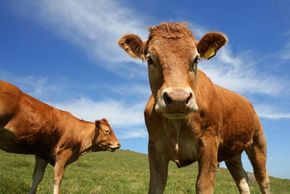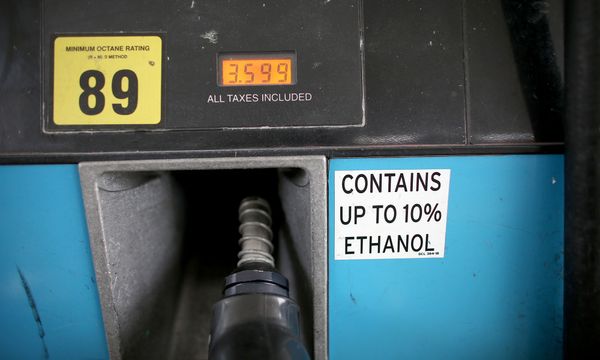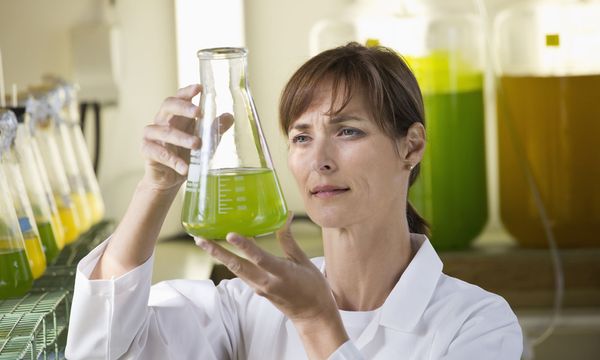Agriculture is responsible for an estimated 14 percent of the world's greenhouse gases. A significant portion of these emissions come from methane, which, in terms of its contribution to global warming, is 23 times more powerful than carbon dioxide. The U.S. Food and Agriculture Organization says that agricultural methane output could increase by 60 percent by 2030 [Source: Times Online]. The world's 1.5 billion cows and billions of other grazing animals emit dozens of polluting gases, including lots of methane. Two-thirds of all ammonia comes from cows.
Cows emit a massive amount of methane through belching, with a lesser amount through flatulence. Statistics vary regarding how much methane the average dairy cow expels. Some experts say 100 liters to 200 liters a day (or about 26 gallons to about 53 gallons), while others say it's up to 500 liters (about 132 gallons) a day. In any case, that's a lot of methane, an amount comparable to the pollution produced by a car in a day.
Advertisement
To understand why cows produce methane, it's important to know a bit more about how they work. Cows, goats, sheep and several other animals belong to a class of animals called ruminants. Ruminants have four stomachs and digest their food in their stomachs instead of in their intestines, as humans do. Ruminants eat food, regurgitate it as cud and eat it again. The stomachs are filled with bacteria that aid in digestion, but also produce methane.
With millions of ruminants in Britain, including 10 million cows, a strong push is underway to curb methane emissions there. Cows contribute 3 percent of Britain's overall greenhouse gas emissions and 25 to 30 percent of its methane. In New Zealand, where cattle and sheep farming are major industries, 34 percent of greenhouse gases come from livestock. A three-year study, begun in April 2007 by Welsh scientists, is examining if adding garlic to cow feed can reduce their methane production. The study is ongoing, but early results indicate that garlic cuts cow flatulence in half by attacking methane-producing microbes living in cows' stomachs [Source: BBC News]. The researchers are also looking to see if the addition of garlic affects the quality of the meat or milk produced and even if the animals get bad breath.
Another study at the University of Wales, Aberystwyth, is tracking quantities of methane and nitrogen produced by sheep, which provide a good comparison model for cows because they have similar digestive systems, but are less unruly. The sheep in the study are living in plastic tunnels where their methane production is monitored across a variety of diets.
Many other efforts are underway to reduce ruminant methane production, such as attempting to breed cows that live longer and have better digestive systems. At the University of Hohenheim in Germany, scientists created a pill to trap gas in a cow's rumen -- its first stomach -- and convert the methane into glucose. However, the pill requires a strict diet and structured feeding times, something that may not lend itself well to grazing.
In 2003, the government of New Zealand proposed a flatulence tax, which was not adopted because of public protest.
Other efforts look at the grazing lands being used by livestock farmers, which will be discussed in the next section.
So we know that ruminants are producing enormous quantities of methane, but why? Humans produce gases daily, sometimes to their embarrassment, but nowhere near the extent of these animals. On the next page, we'll learn more about the source of the methane problem and some of the controversy behind it.
Advertisement





